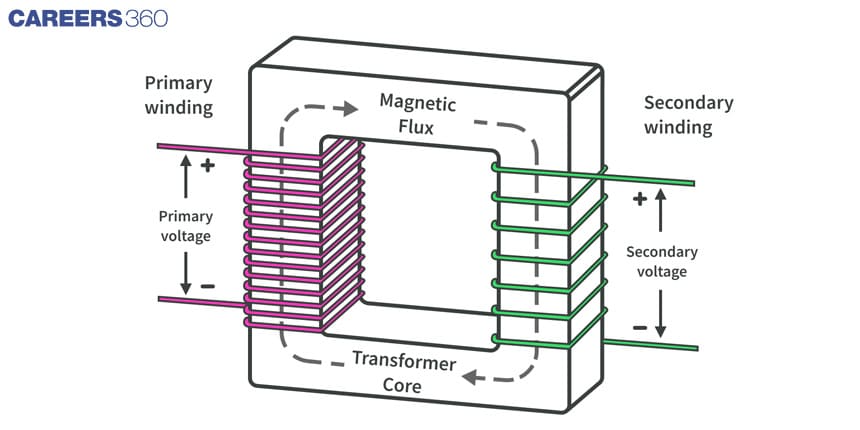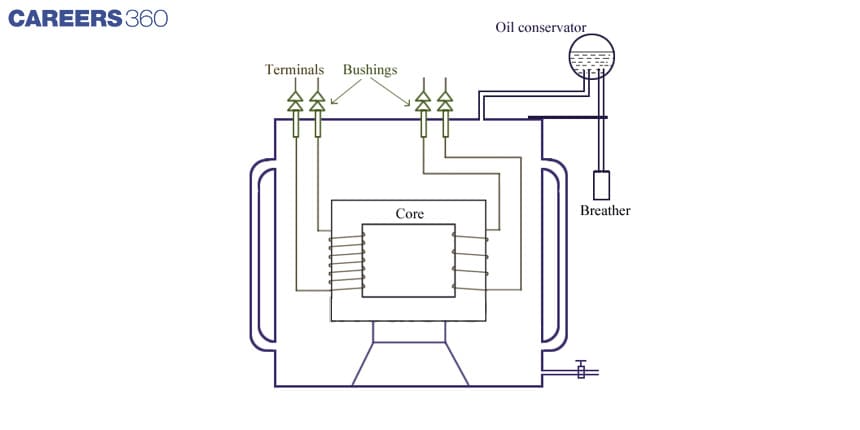Power Up Your Knowledge: Explore The World Of Transformers
Transformers, the silent heroes of our power grid, quietly ensure a smooth flow of electricity from power plants to our homes. Ever wondered about the magic behind this seamless energy transfer? Enter transformers, simple yet powerful devices working on the principle of mutual induction. Picture two coils, dancing to the tune of alternating voltage, creating a magnetic symphony that effortlessly transfers electrical energy. These devices, without any moving parts, can step up or down voltage while adjusting current. But what's inside these transformers, and why are they rated in kVA? Join us on a journey to uncover the secrets of transformers and grasp their essential role in our electrified world.
This Story also Contains
- Working Principle of a Transformer
- Basic Construction of a Transformer
- Types of Transformers
- Why are Transformers Rated in kVA?

Working Principle of a Transformer
Transformers rely on mutual induction, a captivating process where two coils interact despite electrical isolation. Consider the primary winding to be the initiating element, connected to an alternating voltage source and producing a magnetic field.

The primary winding, which is wrapped around the core of the transformer, acts as the initiator. When connected to an alternating voltage source, it serves as the source of the magnetic field, initiating the process. Along with it, the secondary winding responds to changes in the magnetic field by generating an electric current.
The core, made of layered steel sheets, bridges the primary and secondary windings quietly. Its function is to provide a dependable path for the magnetic field, ensuring a strong connection between the coils.
As the primary winding conducts alternating current, it generates a magnetic field, which is essential to the transformer's operation. The magnetic properties of the core facilitate the efficient linking of this magnetic field with the secondary winding, laying the groundwork for the subsequent steps.
The changing magnetic field induces an electric current in the secondary winding, according to Faraday's law. This phenomenon, referred to as mutually induced EMF, is a critical step in the process.
This captivating dialogue of magnetic fields, induced EMF, and electric current elegantly encapsulates the working principle of a transformer, facilitating the efficient transmission of electrical power across different voltage levels.
Basic Construction of a Transformer

A transformer's basic design revolves around two inductive windings: the primary and secondary coils. Although these coils are electrically separated, they are magnetically connected. When an alternating voltage is applied to the primary winding, it generates a magnetic flux that induces an electromotive force (EMF) in the secondary winding via mutual induction.
The laminated steel core is at the heart of the transformer's design. The core, which is made up of carefully stacked sheets, minimises energy losses by providing a continuous magnetic path with few air gaps. The shape of these sheets, which are shaped as E, I, and L, is intended to reduce eddy current loss, thereby increasing the overall efficiency of the transformer.
Electrical isolation is a critical component of transformer design. Insulation materials such as paper, cloth, or mica ensure that there is no direct electrical contact between the windings and the core, contributing to the transformer's safety and effectiveness.
Transformers may include supplementary components in addition to these core elements. A shield is provided by a protective tank that houses the winding and core assembly. Bushings strategically placed aid in terminal extraction. Some transformers may include an oil conservator to aid in cooling and keep operating temperatures at optimal levels. These components work together to form a strong and efficient transformer construction, which is required for reliable electrical power transformation.
Types of Transformers
Transformers are strategically designed to serve specific purposes, which gives rise to the distinctions of step-up and step-down transformers.
Step-Up Transformer
Step-up transformers are designed to increase the voltage level at the secondary winding while decreasing the current proportionally. These transformers are critical in long-distance power transmission because high voltage is required to minimise energy loss. Power generated at plants is frequently increased before transmission through the electrical grid to maximise efficiency.
Step-Down Transformer
Step-down transformers, on the other hand, are designed to reduce the voltage at the secondary winding, resulting in an increase in current. Lower voltages are safer for residential and commercial use, so this type of transformer is essential in local power distribution networks. Step-down transformers are common in residential areas, allowing for the safe and efficient delivery of electricity to end users.
Step-up and step-down transformers' distinct roles in voltage level management contribute to the overall effectiveness and safety of electrical power distribution networks. Each type is designed to perform a specific function within the context of the power supply chain.
Why are Transformers Rated in kVA?
Understanding the rationale behind rating transformers in kilovolt-amperes (kVA) involves exploring the intricate relationship between copper loss, iron loss, and the volt-ampere rating.
A transformer's total loss consists of copper losses associated with current and iron losses associated with voltage. Because copper loss is proportional to the square of the current and iron loss is voltage dependent, the total loss is a function of volt-amperes. The kVA rating of transformers reflects the combined impact of current and voltage on overall power loss.
Unlike some other electrical devices, transformer loss is unaffected by the load power factor. This means that the phase angle between voltage and current has no effect on a transformer's efficiency. As a result, transformers are conveniently rated in kVA, making performance evaluation easier.
The kVA rating is a comprehensive measure of a transformer's capacity, taking into account both current (copper losses) and voltage (iron losses). This rating system ensures that transformers are evaluated holistically across a wide range of operating conditions and load scenarios. In the field of electrical engineering, it also facilitates a standardised approach to transformer specifications and selection.
Also Read- A Class 6 Guide To The Wonders Of Air Around
Applications for Admissions are open.
As per latest syllabus. Physics formulas, equations, & laws of class 11 & 12th chapters
JEE Main Important Chemistry formulas
Get nowAs per latest syllabus. Chemistry formulas, equations, & laws of class 11 & 12th chapters
JEE Main high scoring chapters and topics
Get nowAs per latest 2024 syllabus. Study 40% syllabus and score upto 100% marks in JEE
JEE Main Important Mathematics Formulas
Get nowAs per latest syllabus. Maths formulas, equations, & theorems of class 11 & 12th chapters
